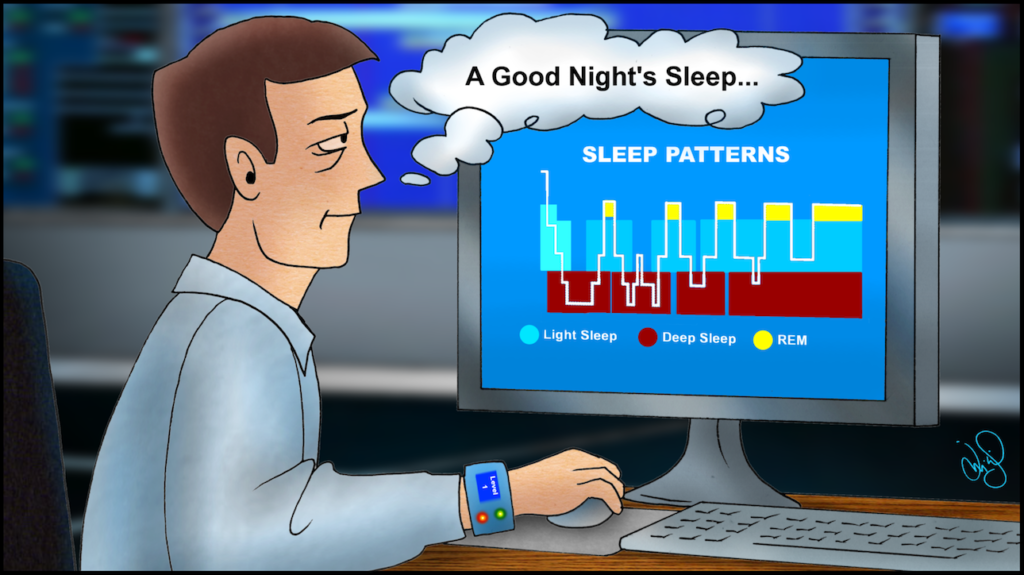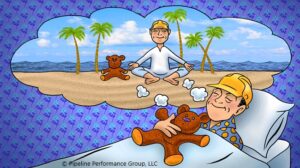Did you purchase one of the 78 million fitness trackers sold in the USA in 2015? I have been using a BASIS fitness and sleep tracker for a few years and it revealed some findings about the quantity and quality of my sleep, including that I toss and turn a great deal. Sadly, the BASIS Peak got recalled because it had a tendency to overheat and some thin-skinned customers received some blisters. Now I am in the market for a different device. I am not recommending any particular brand, but this article will provide some information on different ways to track sleep. In our fatigue management training courses, we emphasize the value of individuals learning about their sleep patterns in order to see if they are getting sufficient sleep.
Sleep tracking, on most of these devices, relies on the principles of “actigraphy” or how much a person moves. If you underwent a formal sleep study, the medical personnel would do a test called a polysomnogram that electronically transmits and records specific physical activities while you sleep. Actigraphy is an inexpensive way to record basic movements during sleep and during physical activities. It is not as reliable, but can be useful for obtaining basic information. An actigraph is worn on the wrist. In apps paired with smartphones, the accelerometer feature is used to track movements.
There are three basic types of trackers: apps that can be paired with smartphones, wearable devices, and devices that attach to your bed or bedding. One of my colleagues has been using the Sleep Cycle app for a few years now, and finds the information it provides about sleep useful. There are many sleep tracking available for both Apple and Android devices. If you prefer an app to a wearable, research one that might be useful for your needs.
Google “best wearable sleep tracker of 2016” and look at the thousands of results. The wearables that receive good ratings are the Fitbit Charge HR, the Jawbone UP3, the Fitbit Blaze, the Misfit Shine, and the Basis Peak (must have been rated before blistering people). I am going to try the Fitbit Charge HR, the Jawbone UP4, and the Misfit Shine 2 to do my own sleep testing. If you are interested in learning more about your sleep patterns, why not get your own fitness and sleep tracker?
There are other devices that attach to your bed or bedding or set on a nightstand next to the bed. Four that receive favorable ratings are Beddit Smart 2.0 Sleep Monitor, Sense, Sleepace Reston, and Withings Aura Smart Sleep System. Three of these have straps that are placed under the sheet. Sense has a “sleep pill” that is attached to a pillow. If you don’t like using an app or wearing something on your wrist while asleep, these devices might work for you.
And if you are like the princess in the fairy tale who could feel a pea through 20 mattresses and cannot bear the thought of sleeping on a strap, then I will mention one other device. The S+ by Resmed is a personalized sleep sensor and monitor that sits on a nightstand and does not have to have any physical contact with the unit, or any mattress straps or electrodes. I might try it also. It is advertised as the first non-contact sleep tracker.
Since we are approaching the end of the year, it is appropriate to look backwards to see how we have done with sleep health and personal fitness during the year. It is appropriate to look forwards and set some goals for the new year. A worthwhile goal could be to learn more about the quality and quantity of your sleep. Enjoy the holidays and continue to do the right things on and off the job to manage the effects of fatigue from working rotating shifts and managing pipeline safety.




